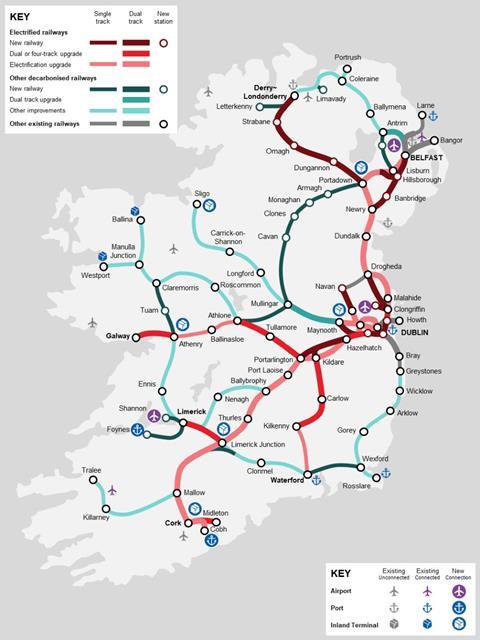
EUROPE: The draft All-Island Strategic Rail Review has been published, making 30 recommendations for development of the railways in the Republic of Ireland and Northern Ireland. These include expanding the total network from 2 300 to 2 950 km, along with electrification, higher speeds and more frequent services.
In 2021 the Department of Transport in Ireland and the Department for Infrastructure in Northern Ireland jointly commissioned engineering firm Arup to produce the review. This was intended to inform the development of the island’s railway system to 2050, in line with Net Zero emissions commitments in both jurisdictions.
The report makes 30 recommendations.
Decarbonisation recommendations
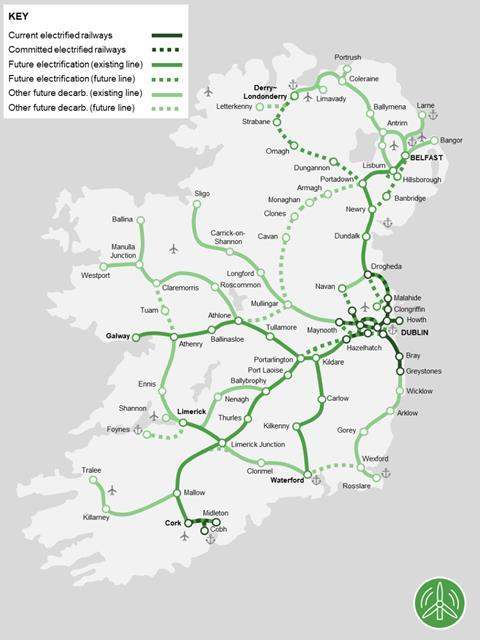
1. Develop and implement an All-Island Rail Decarbonisation Strategy. The proposals include AC electrification of inter-city routes, with battery or hydrogen trains on slower or shorter journeys.
2. Develop plans to invest in skills, supply chains and rolling stock to deliver decarbonisation.
3. Procure hybrid and electric rolling stock in the medium term.
Inter-city recommendations
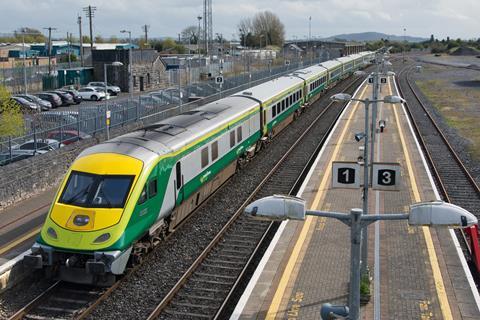
4. Enhance the cross-country rail network to double-track, with four-track sections in places, and increase service frequencies.
5. Upgrade the core inter-city network for 200 km/h operation; the review concluded that the benefits of a fully segregated 300km/h high speed rail ‘would be significantly outweighed by the costs’.
6. Develop short sections of new alignment on congested corridors.
7. Develop an east-west tunnel across Dublin to connect the Dublin – Belfast corridor with Heuston station.
Regional and rural recommendations
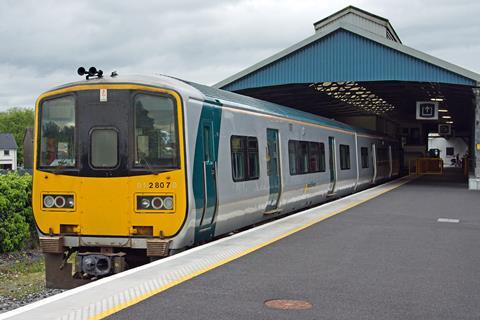
8. Provide more direct services between the west and south coasts.
9. Ensure regional and rural lines have at least one train every 2 h.
10. Increase line speeds to at least 120 km/h.
11. Upgrade Limerick Junction and the Limerick Junction – Waterford line to support freight services between the south coast ports, Foynes and the northwest. A chord at Limerick Junction would support direct Cork – Waterford services.
12. Reinstate the Western Rail Corridor between Claremorris and Athenry.
13. Reinstate the railway between Portadown, Dungannon, Omagh, Strabane, Derry~Londonderry and Letterkenny.
14. Reinstate the South Wexford Railway.
15. Develop the railway to boost connectivity in the North Midlands: reinstating the railway between Portadown, Cavan, Mullingar, and Athlone would address several regional connectivity gaps. Building a new link between Maynooth and Adamstown and double-tracking the railway to Mullingar would also add capacity to support services to this region
16. Integrate bus and train timetables to connect communities where direct rail access proves to be unviable, in places such as Donegal, Enniskillen, Cookstown and Downpatrick.
Sustainable cities recommendations

17. Connect Dublin, Belfast International, and Shannon airports to the railway and improve existing rail-air connections.
18. Double-tracking between Antrim and Monkstown to enable more frequent local services to the north and east of Belfast.
19. Segregate long-distance and faster trains from stopping services.
20. Explore the case for developing new stations in the Belfast, Cork, Derry~Londonderry (including a spur to Limavady), and Limerick-Shannon city regions.
Freight recommendations
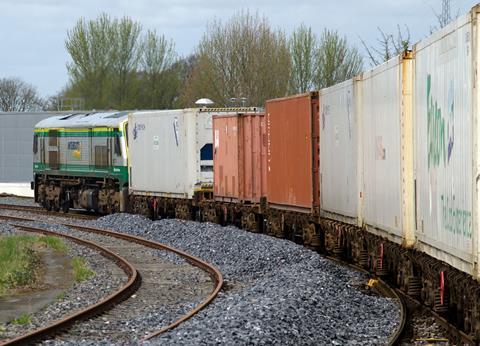
21. Develop sustainable first and last-mile rail access for Dublin port , as ‘without this connection, there are limited options for growing rail freight’.
22. Reduce track access charges for freight, which are ‘very high’ compared to other European railways.
23. Strengthen rail connectivity to the busiest ports including Foynes for Limerick, Waterford, Marino Point for Cork and Rosslare Europort.
24. Develop a network of inland terminals close to major cities on the rail network; potential locations include the Upper Bann area for Northern Ireland, Limerick Junction, a location north of Cork, Athenry for Galway, Sligo and west of Dublin.
Customer experience recommendations
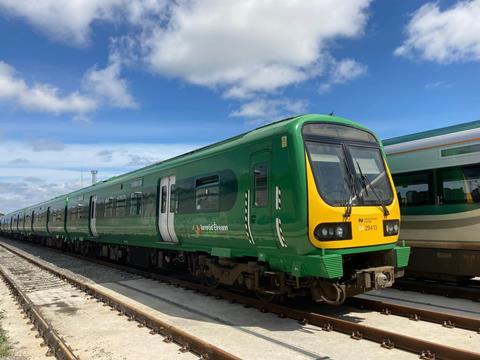
25. Continue to invest in initiatives that deliver a seamless customer journey, such as improved information provision and catering.
26. Continue to benchmark and monitor service quality and deliver continuous improvement.
27. Ensure future rolling stock specifications are aligned to the infrastructure-led interventions, including increasing the size and/or speed of the fleet.
28. Improve integration within rail and between rail and other transport options.
29. Clock-face timetabling.
30. Develop structures to improve the effectiveness of cross-border infrastructure and rail service planning.
Next steps
The last date to submit feedback is September 29 2023. It is anticipated that the final review will then be published around the end of the year.
Each of the proposed projects would be subject to feasibility, option and environmental assessments.
The implementation timelines involve three periods: short-term interventions to be completed by 2030, medium-term between 2030 and 2040, and long-term between 2040 and 2050.
The capital cost of full implementation in Ireland is estimated at €27·6bn at 2023 prices, and £7·7bn in Northern Ireland.
Responses
Ireland’s Minister for Transport, Climate, Environment & Communications Eamon Ryan commented that ’in the 1920s, Ireland had one of the best rail networks in the world. We’re reviving that network with new lines for people and freight, half-hourly frequencies, higher speeds, electrification and an all island approach.’
Irish national railway Iarnród Éireann said the review ‘is hugely welcome, both in setting a strategic framework for the future development of our rail network and services, and in illustrating how central rail will be to Ireland’s sustainable transport network’. It ‘builds on our existing investment programme, which is seeing record investment in both passenger and freight, at a hugely exciting time for all’.
Rail Users Ireland said the proposals would ‘go a long way to address many of the shortcomings and gaps in the current network and passenger experience’.
However, it said ‘little from the previous 2003 review was done and there are reports going back to 1975 still pending’, and so ‘the challenge is to convert the theory into investment and to make this real. This is not government policy nor is any element funded.’
- Subscribers can read an in-depth interview with Iarnród Éireann Chief Executive Jim Meade which appeared in the July 2023 issue of Railway Gazette International.

















